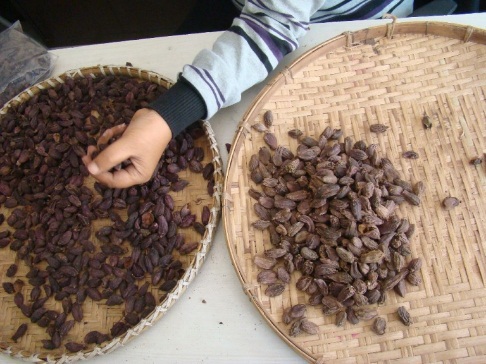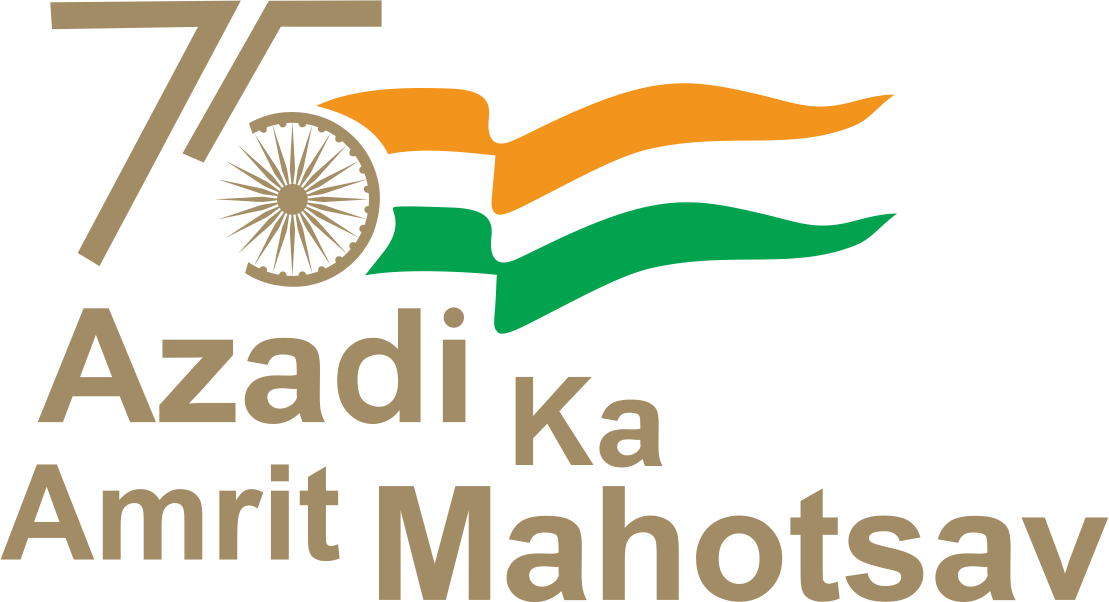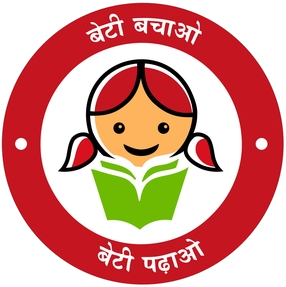Research Highlights
Small cardamom
Agronomy & Soil Sciences
- Package of practices for various agro techniques such as nursery preparation, planting methods, nutrient management and judicious irrigation schedules were developed and transferred to the planters.
- An economic schedule of soil cum foliar application of fertilizers for cardamom has been formulated which results in 33% saving in fertilizer costs as compared to soil application.
- Developed remedial measure for zinc and Boron deficiency.
- Soil Analysis & Fertilizer recommendations weres routinely carried out.
- Soil Mapping of Kerala under NHM Project was conducted. Project on ”Soil Based Plant Nutrient management Plan for Agro Ecosystem of Kerala Phase –1 to analyse samples from all panchayaths of Idukki & Kottayam districts.
- Issues of soil degradation in cardamom tract - deficiency of micro nutrients / secondary nutrients, decline of soil pH and loss of sustainability was studied
- The institute has analyzed more than 1,00,000 cardamom soil samples received from planters of Kerala, Tamil Nadu and Karnataka and most judicious and balanced recommendations were given.
- Integrated Nutrient Management (INM), Biofertilizers, composting, traditional organic inputs (Panchagavya, FAE, EAE etc.) leading to development of organic practices (Biodynamic farming, EM technology etc.) & training was carried out.


- Ecofriendly farm practices, organic production systems and GAP for cardamoms were systematized.
- Farm Mechanization programmes for cardamom cultivation were undertaken. Evaluated various mechanical devices such as weeder, washing machine, pitmaker,as well as cardamom driers viz. Biomass gasifier model of cardamom drier, Diesel model of cardamom drier and improved cardamom drier (Kardi type)for carrying out various farm operations in cardamom plantations.
Crop Improvement
- Inventorisation and collection of small cardamom germplasm were undertaken in the Western Ghats region
- Collected 500 plus germplasm accessions of cardamom from different cardamom zones
- Conserved the germplasm in the National Conservatory of Cardamom Germplasm at Myladumpara&Saklespur
- Evaluation trials were carried out to identify genetic variants of cardamom from various habitats for exploitation in crop improvement programmes
- Released eight high yielding cardamom selections/varieties viz.,
1. ICRI-l, ICRI-2, ICRI-5, ICRI-6, ICRI-7 (for Kerala Zone),
2. ICRI-3 & ICRI-8 (for Karnataka Zone)
3. ICRI-4 (for Tamil Nadu Zone).
- Released selections showed high yield potential of 650 to 800 kg/ha under moderate levels of management.
- Studied the breeding behaviour and pollen biology of cardamom and vanilla.
- Prepared a floristic calendar of the cardamom tract.
1. The bee flora comprises of 37 species including 19 trees.
- Evaluated turmeric varieties viz.,
1. PCT-8, PCT-B, PCT-14, BSR-1 and Co-1
2. Co-1 and BSR-1 most suited to the high ranges of Kerala.
Recently released varieties of small cardamom
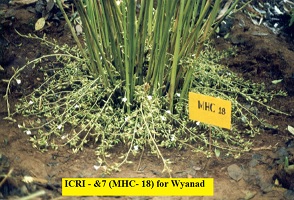
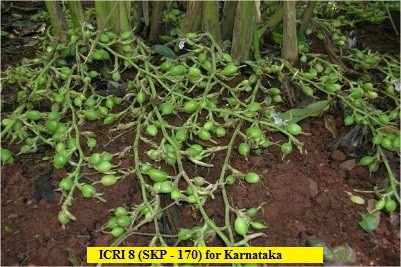
Promising cardamom hybrids developed at RRS Saklespur
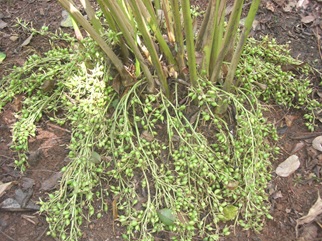

Biotechnology
- Developed Micropropagation systems for
1. Small cardamom,
2. Large cardamom,
3. Vanilla,
4. Black pepper,
5. Ginger,
6. Turmeric,
7. Herbal spices viz. Oregano, Mint, Sage, Thyme.
- Technologies scaled up for large scale production -10
- No. of Biotech firms to which Protocols were transferred on a MoU for further utilization - 10.
- Large cardamom & Vanilla plants produced and supplied to farmers -3.5 lakhs
- Training on TC techniques - extended to 110 youth from BPL families on collaboration with ‘Kudumbashree’ a Govt. of Kerala project on poverty alleviation and empowerment of rural women.
- Micropropagation system developed for tree spices viz-
1. Clove,
2. Garcinia,
3. Tamarind,
4. Curry leaf.
- Other Tissue Culture techniques employed - cardamom, ginger & vanilla.
1. Somatic Embryogenesis,
2. Synthetic Seed technology,
3. Protoplast Cultures
- Interspecific hybrids produced - Vanilla planifoliaXV. wightiana
- Molecular Biology facility was established
- Genetic diversity studies were carried out using molecular markers.
- Variety specific molecular marker generated - Malabar specific
- Virus indexing protocols standardized - Pepper & cardamoms.
- Completed - Cardamom Transcriptome Sequencing with analysis in progress.
TC plants of small cardamom, black pepper and large cardamom
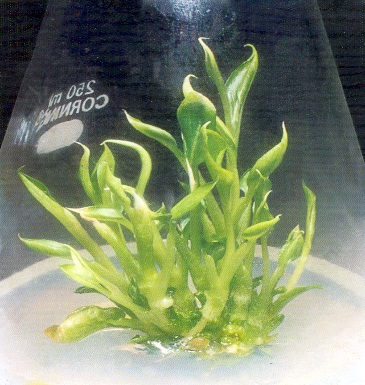
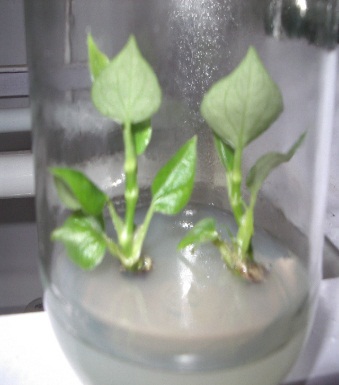
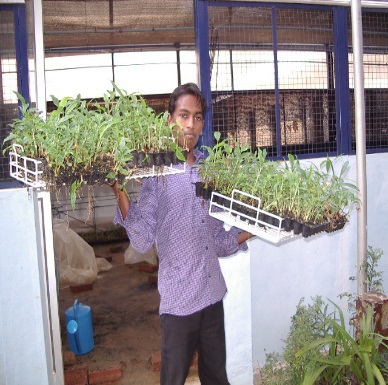
Plant Pathology Division
- Identified and characterised causal organisms of capsule rot, rhizome rots and nursery rots
- Developed Integrated Disease Management (IDM) strategies
- Identified tolerant lines of Phytophthora from germplasm accessions
- Recommended the biocontrol agent Trichoderma sp. for controlling capsule rot, rhizome and seedling rot diseases after trials
- ProducedBioagentsviz, Trichoderma& Pseudomonasand suppliedto farmers
- Mass multiplication protocol was developed for VAM which was found effective in improving growth and vigour and in protectingcardamom seedlings from soil borne pathogens.
- Developed control for new diseases reported- Panicle blight, root rot and leaf yellowing. .
- ELISA as quick diagnostic tool of viral diseases – was proved in pilot trials.
- Identified pathogens of vanilla and herbal spices, control methods developed.
- Initiated studies on mathematical modellingfor prediction of capsule rot disease outbreak
- Studied Climate change impact on disease occurrence in cardamom.
Bioagent Production

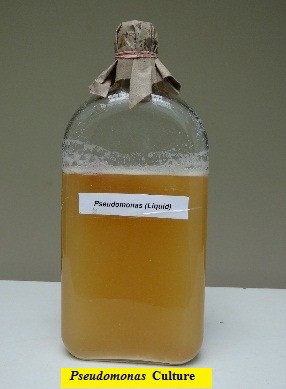
Entomology Division
- Evaluated forty chemical insecticides formulations on major pests of cardamom
- Recommended effective insecticides at minimum concentration to planters.
- Brought down the number of insecticide applications to 5-7 per year from 12-14 sprays/year, thus reducing the quantity of pesticides and the application cost.
- The technology of pruning of dried cardamom leaves (cultural control) during February, and application of five sprays of insecticides/year on the lower one third portion of cardamom plants that have proved effective and economical for thrips control, was demonstrated in planter's field.
- Pesticide spray schedule for Kerala, Karnataka and Tamil Nadu cardamom plantations was formulated which effectively managed the major and minor foliar pests.
- IPM consisting of mechanical control of beetles and chemical control of grubs have been worked out for cardamom root grub management and has been demonstrated in planters’ field.
- Identified certain plant extracts having growth regulating and insecticidal property on cardamom shoot borer and hairy caterpillar.
- Neem based insecticides were found to be effective on ginger borer.
- An effective management strategy was evolved usingEntomopathogenic nematodes (EPN), Heterorhabditisindica for the management of cardamom Root knot nematode and Meloidogyne incognita(Plant parasiticNematodes-PPN).
- An effective management strategy for whitefly was also evolved (with behavioural control - trapping adult fly with yellow sticky trap and also spraying of neem oil suspension at 0.5% on the lower surface of leaves for control of nymphs) and being recommended.
EPN cadavers & application to cardamom
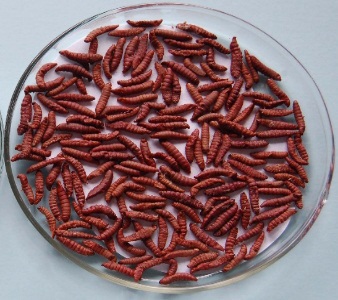
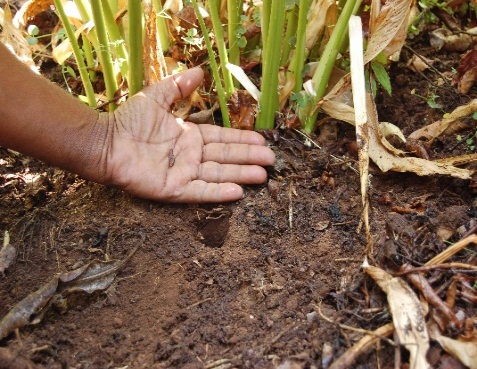
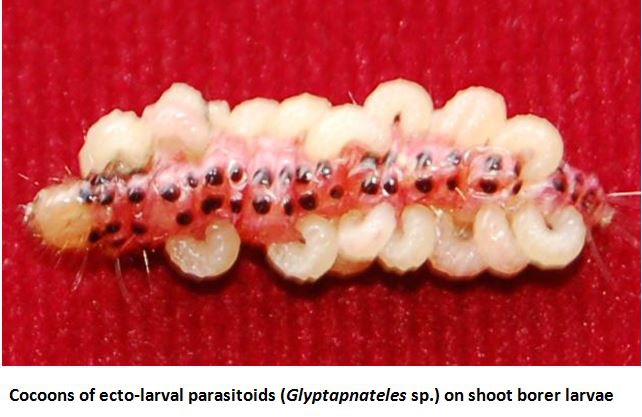
Large cardamom:
- Germplasm conservatory was established and maintained at RRS ICRI& Research farms at Pangthang and Kabi with 254 accessions based on high yielding lines and other specific characters.
- Released two high yielding varieties: ICRI Sikkim 1 & ICRI Sikkim 2 by selection (yield potential 800 kg / ha) from Sawney cultivar.
- Detailed phenology of the crop was worked out
- Established the economic life span of large cardamom as 15 years under intensive management.
- Fertility status of large cardamom soils was evaluated.
1. Mean pH - 5.48,
2. Organic carbon - 3.2%,
3. Available Nitrogen - 29.64 (mg/100g),
4. Phosphorus 1.37 (mg/100g)
5. Potassium 17.87 (mg/100 g).
6. The soils were found high in Nitrogen& medium in Phosphorus and Potassium.
- Studied and identified the major pests of large cardamom viz., Leaf caterpillar (Artonachorista), Shoot fly (Merochloropsdimorphus), stem borer (Glyphipterixsp) and white grub (Holotrichiaspp) &developed IPM strategies in management of large cardamom pests.
- Identified Bumble bees (Bombushaemorhoidalisand B. breviceps) as the major pollinator in large cardamom.
- Worked out Bio-agent utilization strategies for white grub management.
- Studied and identified the major diseases of large cardamom (AmomumsubulatumRoxb.).
1. Identified Chirke and Foorkey- major viral diseases.Disease transmission, survival and management were worked out.
2. Identified Blight disease(Colletotrichumgloeosporioides)– major fungal disease.
3. Two other two fungal diseases, leaf streak and Phoma leaf spot were identified
- Problems due to abiotic factors such as elongation of spike, late maturity etc were studied.
- Collected 64 disease escapes lines and identified three accessions (SCC 12, 22 & 179) as moderately tolerant to blight and are under field evaluation.
- Native bio control agents were identified, mass multiplied and supplied to farmers based on the demand for disease management under organic system of cultivation in Sikkim and Darjeeling district of West Bengal.
- Established facility for production and distribution of bio control agentsat ICRI, RRS, Tadong.
1. A fermenter with a capacity of 80 litres was commissioned at the ICRI Research farm Pangthang for mass multiplication of biocontrol agents.
- Scientifically improved large cardamom bhatti system was developed by the ICRI, RRS Tadong popularized by Spices Board (Dev) in Gangtok and Darjeeling Region through subsidized schemes.
- Quality improvement techniques were standardized through improved curing technology and polishing and gradation of cured capsules.
Hybridization studies on large cardamom
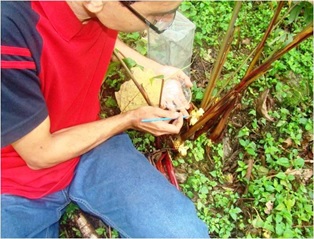
Large cardamom capsules cured using ICRI Improved Bhatti (left)
